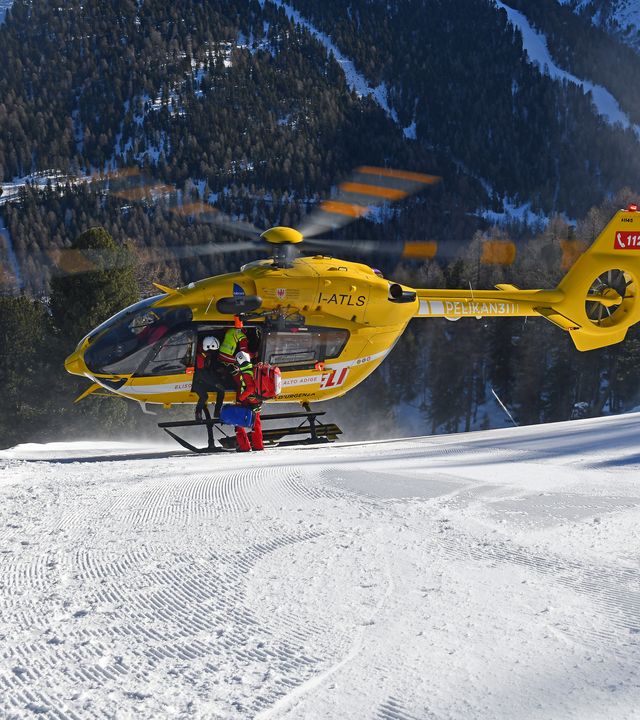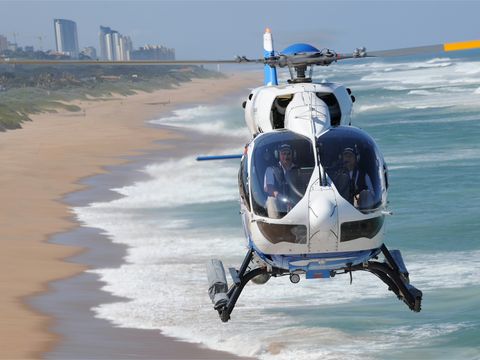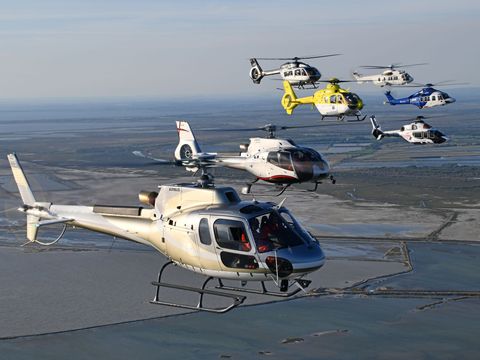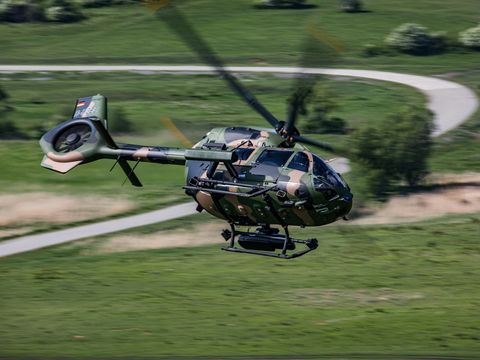H145
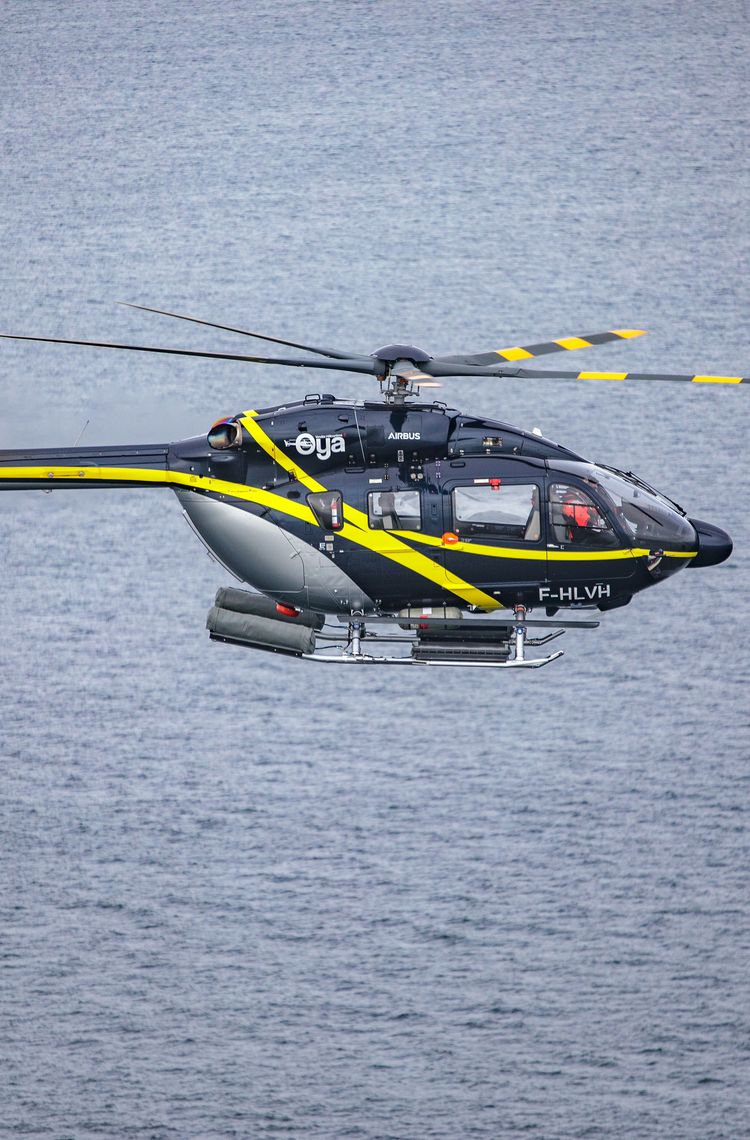
The unrivalled performer
The Airbus H145 is the latest member of the company’s four-tonne-class twin-engine rotorcraft product range. It has has quickly become one of the industry’s leading helicopters, with built-in mission capability and flexibility, especially in high and hot operating conditions.
Compact in size, this helicopter’s small footprint and large, flexible cabin make it the aircraft of choice for a variety of civil and military missions.
Key figures
Flexible and proven
A wide range of rapidly- and easily-interchangeable optional equipment ( 400+) is available for the H145. Together with its inherently versatile cabin layout and its smooth flight, this multi-purpose rotorcraft is tailored for emergency medical services and law enforcement duties, along with aerial work and passenger transportation, including private and business aviation as well as offshore operations.
In 2020, a new innovative version of the H145 entered service equipped with a five-bladed main rotor. This new H145 embodies a major customer expectation: the ability to operate an aircraft with a great useful load. On that point, the H145 is over-performing, and surpassing all the competitors in its class. The latest version of Airbus’ H145 family has increased the useful load by 150 kg compared to the previous version, leading to the best ratio of useful load to maximum takeoff weight (50%) for a light twin helicopter.
The new H145’s D-value (the largest overall dimension when rotors are turning) is further reduced, enabling the aircraft to land in even more confined areas. This agility makes the H145 the best choice for challenging EMS and public services missions.
Impressive performance and built-in safety
The H145 offers exceptional performance thanks to its two Safran Arriel 2E power plants, each managed by a dual full-authority digital engine control (FADEC), along with the helicopter’s upgraded main and tail rotor systems. This guarantees an unprecedented level of performance in all engines operative (AEO) operations and vital power reserves in one engine inoperative (OEI) scenarios.
The H145 is the only rotorcraft of its range to take off and land at 20,000 ft – a distinction confirmed in September 2019 with a flight over Aconcagua in the Andes Mountain range (22,840 ft) – where the H145 demonstrated its incomparable power reserve at high altitude.
Twin-engine reliability is complemented by a fully separated fuel supply system, a duplex hydraulic system, dual electrical system and redundant lubrication for the main transmission. In addition, a key safety aspect of the H145 is its inherent crashworthiness with the energy-absorbing fuselage and seats, as well as crash-resistant fuel cells.
The H145 also is equipped with a wireless airborne communication server (wACS), allowing wireless data exchange with a ground station in the most secure way ever developed. The enabled data collection, exchange and analysis that are associated open a limitless world of improvement in the field of maintenance and flight management, further supported by the development of Airbus connected services.
As a further evolution of the BK117 family, the H145 incorporates the latest technologies, such as the advanced cockpit design with the most modern human machine interface (HMI), state-of-the-art Helionix® avionics suite and a Fenestron® anti-torque device as the tail rotor.
Airbus’ Helionix avionics – connected to the wACS, provides undisputed superiority for in-flight envelope protection, pilot assistance and time savings for data transfer which, along with situational awareness – provide unprecedented levels of flight safety. Meeting the latest international avionics standards, Helionix integrates an innovative alerting and self-monitoring system.
Additionally, the H145 is equipped with an advanced dual-duplex, 4-axis autopilot specifically designed for helicopters. This offers:
- High flight stability and precision,
- Unique flight envelope,
- Over-limit protection,
- Automated takeoff,
- Fully-coupled approaches to hover.
The H145’s shrouded Fenestron® technology brings benefits such as improved flight and ground safety to customers, as well as enhanced anti-torque control efficiency, reduced power demand in forward flight, and lower sound and vibration levels.

A maintenance-friendly helicopter
Customers benefit from simplified maintenance with the new advanced bearingless main rotor, which has fewer parts.
The simplified rotor system and airframe components, together with an enhanced main gear box, enable low maintenance costs and high in-service-time. The engines also significantly contribute to the reduced maintenance costs through high TBO (time between overhaul) and an evolved maintenance concept with usage monitoring, which increases engine availability.
The optional health monitoring system with usage monitoring system (HUMS) keeps track of the engine’s health in accordance with usage conditions, resulting in further availability and enhanced, cost-effective maintenance.
The latest on the H145
In the spotlight
-

THC's strategic choice: Operating the Airbus H125, H145, and ACH160
Web Story
Helicopters
THC is propelling Saudi Arabia's growth with a modern fleet, including Airbus helicopters, supporting major events, and saving lives with HEMS operations. -

Nothing can compare to a helicopter's capacity to make lifesaving interventions
Web Story
Helicopters
-

Fighting fires with five-blades: the Airbus H145
Web Story
Helicopters
-

Norwegian Air Ambulance to continue fleet modernisation with Airbus H145
Press Release
Helicopters
-

A perfect match - DRF Luftrettung and the Airbus H145
Web Story
Helicopters
